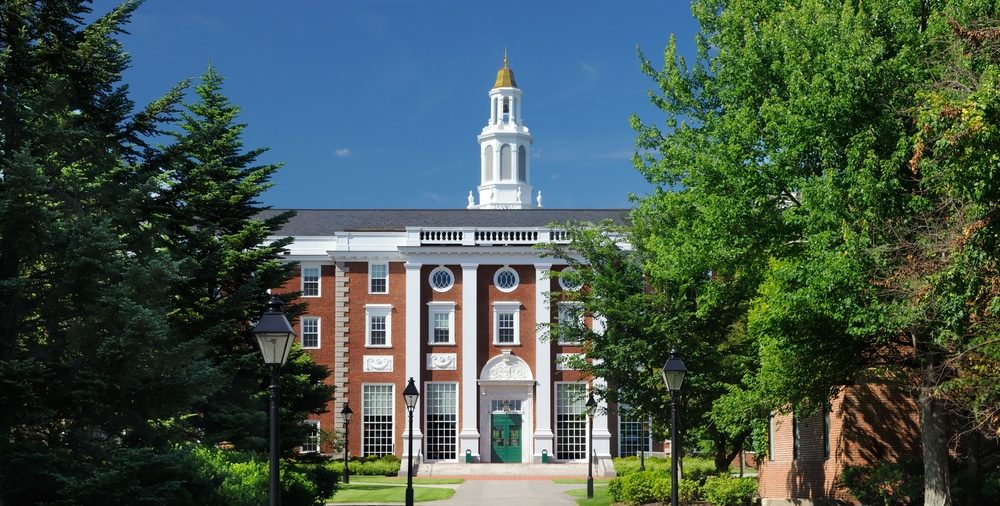Taking a Campus Tour of Harvard University
Harvard University, located in Cambridge, Massachusetts, is one of the world’s most prestigious and renowned educational institutions. Its history, breathtaking campus, and vibrant academic environment make it a must-visit destination for prospective students, alumni, and higher education enthusiasts. If you plan to take a campus tour of Harvard, this comprehensive guide will provide you with all the information you need to make the most of your visit.
Understanding Harvard’s History
Before you embark on your Harvard campus tour, it’s essential to familiarize yourself with Harvard’s rich history. Established in 1636, Harvard University is the oldest institution of higher learning in the United States. It was founded by the Massachusetts Bay Colony intending to educate clergy and perpetuate the Puritan faith. Since its inception, Harvard has profoundly impacted academia, culture, and society.
The Founding of Harvard University
Harvard owes its name to its first benefactor, John Harvard, a young minister who bequeathed half of his estate and entire library to the institution. This generous donation allowed Harvard to expand its resources and establish itself as a respected learning center.
John Harvard’s contribution not only provided financial stability to the university but also set a precedent for future philanthropic endeavors. Over the years, Harvard has received substantial donations from individuals and organizations, enabling it to maintain its position as a world-class institution.
As Harvard grew in reputation, it attracted scholars and intellectuals worldwide. The university became a hub of intellectual exchange, fostering a vibrant academic community that thrived on pursuing knowledge and exchanging ideas.
Significant Historical Events at Harvard
Harvard has witnessed and been a catalyst for many significant events throughout its history. From its involvement in the American Revolution to its contributions during World War II, Harvard has always been at the forefront of innovation and progress. Its alumni include prominent figures such as U.S. presidents, Nobel laureates, and successful entrepreneurs.
During the American Revolution, Harvard played a crucial role in shaping the nation’s future. Many of its students and faculty members actively participated in the fight for independence, contributing their knowledge and skills to the cause. The university became a center for revolutionary ideas and a breeding ground for leaders who would shape the course of American history.
Harvard’s commitment to excellence and innovation continued during World War II. The university played a vital role in scientific research and development, contributing to the war effort in various ways. Harvard scientists worked on projects such as radar technology, atomic research, and cryptography, making significant contributions that helped turn the tide of the war.
Harvard’s impact extends beyond academia and into culture and society. The university has been a hotbed for artistic and literary movements, nurturing creative minds that have shaped the cultural landscape. From renowned authors and poets to influential artists and musicians, Harvard has been a source of inspiration and a platform for artistic expression.
Today, Harvard continues to be a leading institution in education, research, and innovation. Its commitment to intellectual rigor, diversity, and social responsibility ensures it remains at the forefront of global advancements. As you explore the campus, please take a moment to appreciate the rich history and the countless contributions that have made Harvard the institution it is today.
Preparing for Your Campus Tour
Now that you have a foundational understanding of Harvard’s history, it’s time to prepare for your campus tour. Here are some essential suggestions to ensure a smooth and enjoyable experience.
Embarking on a campus tour is an exciting opportunity to immerse yourself in the rich history and vibrant atmosphere of Harvard University. As you explore the renowned institution, you’ll have the chance to witness the architectural marvels, engage with knowledgeable tour guides, and envision yourself as a part of this prestigious academic community.
Before you set foot on the hallowed grounds of Harvard, it’s crucial to make a checklist of items that will enhance your tour experience. First and foremost, pack comfortable walking shoes that will withstand the miles you’ll cover during your exploration. The sprawling campus is a treasure trove of captivating sights, and you wouldn’t want tired feet to hinder your adventure.
Additionally, it’s wise to bring a water bottle and some snacks to energize yourself throughout the day. As you absorb the wealth of knowledge and immerse yourself in the captivating surroundings, staying hydrated and nourished is essential. These provisions will ensure that you can fully appreciate the awe-inspiring architecture, lush green spaces, and lively campus atmosphere.
While preparing for your tour, don’t forget to check the weather forecast and dress accordingly. New England’s climate can be unpredictable, so it’s essential to be prepared for any weather conditions. Whether it’s a sunny day with a gentle breeze or a drizzly afternoon, dressing appropriately will allow you to focus on the wonders of Harvard without any discomfort.
Best Times to Visit Harvard
While any time of the year is excellent for visiting Harvard, some seasons offer unique experiences that add magic to your tour. If you’re fortunate enough to plan your visit during autumn, you’ll be treated to a breathtaking display of vibrant fall foliage. The campus transforms into a picturesque landscape, with trees adorned in fiery red, golden yellow, and burnt orange hues. As you stroll along the pathways, the crunch of fallen leaves beneath your feet will create a symphony of nature’s beauty.
On the other hand, if you visit Harvard during the spring, you’ll witness the campus in full bloom. The once-dormant trees burst forth with delicate blossoms, painting the surroundings with a kaleidoscope of colors. The fragrance of flowers fills the air, creating a sensory experience that complements the intellectual stimulation the university provides.
While planning your visit, it’s worth considering that weekdays generally offer a less crowded experience than weekends. By opting for a weekday tour, you’ll have the opportunity to explore the campus leisurely, absorb the tranquil ambiance, and engage in meaningful conversations with your tour guide.
Exploring Harvard’s Campus
One of the highlights of your tour will undoubtedly be exploring Harvard’s beautiful campus. Spread out across several acres, the university offers a harmonious blend of historical architecture and modern amenities.
As you step onto the campus, you’ll be greeted by a sense of history and prestige. The meticulously maintained lawns and vibrant foliage create a picturesque setting that will captivate your senses. The air is filled with the energy of students rushing to classes, engaging in lively discussions, and immersing themselves in the pursuit of knowledge.
Harvard’s campus is a treasure trove of architectural wonders. Each building tells a story, showcasing the university’s rich history and commitment to excellence. From the grandeur of Memorial Hall, with its stunning stained glass windows and intricate woodwork, to the modern elegance of the Science Center, every structure is a testament to the university’s dedication to tradition and innovation.
Key Buildings and Landmarks
Start your exploration at Harvard Yard, the heart of the campus and home to the iconic John Harvard Statue. This bronze statue, affectionately known as the “Statue of Three Lies,” is a popular spot for photos and a symbol of the university’s enduring legacy. Legend has it that rubbing the statue’s foot brings good luck, so don’t forget to gently touch it as you pass by.
As you venture further into the campus, visit the Widener Library, named after Harry Elkins Widener, a Harvard alumnus who tragically perished aboard the Titanic. This magnificent library houses over 3.5 million volumes, making it one of the largest academic libraries in the world. Step inside and immerse yourself in the peaceful ambiance, surrounded by the collective knowledge of centuries.
Another must-see landmark is Memorial Hall, a majestic building that memorializes Harvard students who lost their lives in World War I. Its grandeur is matched only by the solemnity of its purpose, reminding visitors of the sacrifices made in pursuing freedom and knowledge.
Make sure also to explore the Science Center, a modern marvel that houses state-of-the-art laboratories and classrooms. This hub of scientific discovery is where groundbreaking research takes place, pushing the boundaries of human knowledge and paving the way for future innovations.
The Layout of Harvard University
Harvard is divided into schools and colleges specializing in a specific field of study. Take some time to familiarize yourself with this layout, as it will give you a deeper understanding of the university’s academic structure and offerings. The Harvard Yard is a central hub, connecting the various schools and providing a bustling intellectual atmosphere.
Within the Harvard Yard, you’ll find the Faculty of Arts and Sciences, which encompasses various disciplines, including humanities, social sciences, and natural sciences. This is where the core undergraduate curriculum is taught, fostering a well-rounded education that prepares students for lifelong learning and success.
Adjacent to the Yard, you’ll discover the Harvard Law School, renowned for its rigorous legal education and esteemed faculty. The law school’s historic buildings exude a sense of gravitas, reflecting the institution’s commitment to shaping the legal profession’s future.
Further afield, you’ll encounter the Harvard Medical School, a world-renowned institution at the forefront of medical research and education. Here, aspiring doctors and researchers are trained to tackle the most pressing health challenges of our time, pushing the boundaries of medical science and improving lives around the globe.
As you explore Harvard’s campus, take a moment to soak in the vibrant atmosphere and the intellectual curiosity permeating every corner. Whether you’re strolling through the historic Harvard Yard, marveling at the architectural wonders, or engaging in thought-provoking conversations with students and faculty, you’ll immerse yourself in an environment that celebrates knowledge, innovation, and the pursuit of excellence.
Harvard’s Academic Environment
Harvard’s academic environment is renowned for its rigorous standards and commitment to excellence. The university’s rich history and tradition of intellectual curiosity create a vibrant atmosphere that fosters learning and growth. As you embark on your tour of Harvard, you will have the opportunity to immerse yourself in this stimulating environment and discover the vast array of educational opportunities available.
As you explore the campus, you will encounter a diverse community of scholars, students, and faculty members passionate about their fields of study. The exchange of ideas and the pursuit of knowledge are at the heart of Harvard’s academic culture, and you will witness this firsthand during your visit.
Overview of Harvard’s Schools and Colleges
Harvard comprises several schools and colleges, each with its distinct identity and academic focus. The Faculty of Arts and Sciences, the largest division of the university, offers a wide range of undergraduate and graduate programs in various disciplines. From mathematics to history, from psychology to economics, students can explore their interests and pursue their intellectual passions.
The Harvard Medical School, renowned for its groundbreaking research and innovative medical education, trains the next generation of physicians, scientists, and healthcare leaders. With state-of-the-art facilities and a collaborative approach to learning, the medical school provides an unparalleled environment for medical education and research.
The Harvard Law School, one of the world’s oldest and most prestigious law schools, offers a rigorous legal education that prepares students for careers in law, public service, and academia. With a faculty of leading scholars and practitioners, the law school provides a comprehensive and intellectually stimulating curriculum.
These are just a few examples of the schools and colleges that make up Harvard University. Each institution offers unique programs and academic resources, providing students with many opportunities to pursue their academic interests and achieve their goals.
Research and Learning Opportunities at Harvard
Harvard prides itself on its commitment to research and innovation. The university’s research enterprise spans various disciplines, from the sciences to the humanities, and encompasses fundamental and applied research. From state-of-the-art laboratories to renowned research centers, Harvard provides unparalleled opportunities for students to engage in groundbreaking work.
During your tour, be sure to ask about the various research projects and initiatives happening on campus. Whether exploring the mysteries of the universe in the physics department, studying the intricacies of human behavior in the psychology department, or delving into the complexities of global politics in the international relations program, there is no shortage of fascinating research happening at Harvard.
Furthermore, Harvard’s commitment to experiential learning extends beyond the laboratory. The university offers many hands-on learning opportunities, such as internships, fieldwork, and community service programs. These experiences allow students to apply their knowledge in real-world settings and positively impact society.
As you navigate the campus, you will encounter numerous research facilities, libraries, and study spaces dedicated to fostering a culture of intellectual exploration and discovery. Whether you are a budding scientist, an aspiring writer, or a future entrepreneur, Harvard provides the resources and support you need to thrive academically and intellectually.
As you continue your tour of Harvard, immerse yourself in the academic environment that has produced countless leaders, innovators, and changemakers throughout history. The pursuit of knowledge knows no bounds at Harvard, and your visit will undoubtedly inspire you to embark on your intellectual journey.
Student Life at Harvard
Harvard offers a vibrant and diverse student life, providing plenty of opportunities for personal growth, extracurricular activities, and making lifelong connections.
Housing and Dining Options
During your tour, you’ll have the chance to see the different residential houses that makeup Harvard’s unique housing system. Each home has its character and sense of community. Additionally, Harvard boasts a wide range of dining options, from casual cafes to elegant dining halls.
Clubs, Sports, and Extracurricular Activities
Harvard’s campus teems with student organizations, clubs, and sports teams. Whether you’re interested in joining an a cappella group, playing a varsity sport, or being part of a community service organization, there’s something for everyone. Explore the vibrant extracurricular scene and get a taste of the rich student life at Harvard.
Exploring Harvard University on a campus tour is an exhilarating experience. Enjoy its rich history, architectural beauty, world-class academics, and vibrant student life. Whether you’re considering applying to Harvard or simply curious to learn more, this iconic institution will leave an indelible mark on your intellectual journey.
If you want to further discuss the information in this Harvard campus tour or inquire about college admissions, look no further! Our experts here at AdmissionSight can help you! Here at AdmissionSight, we have over a decade’s worth of experience guiding students through the competitive admissions process to get accepted to the top universities in the world. Feel free to set up an appointment today to book your initial consultation.









































